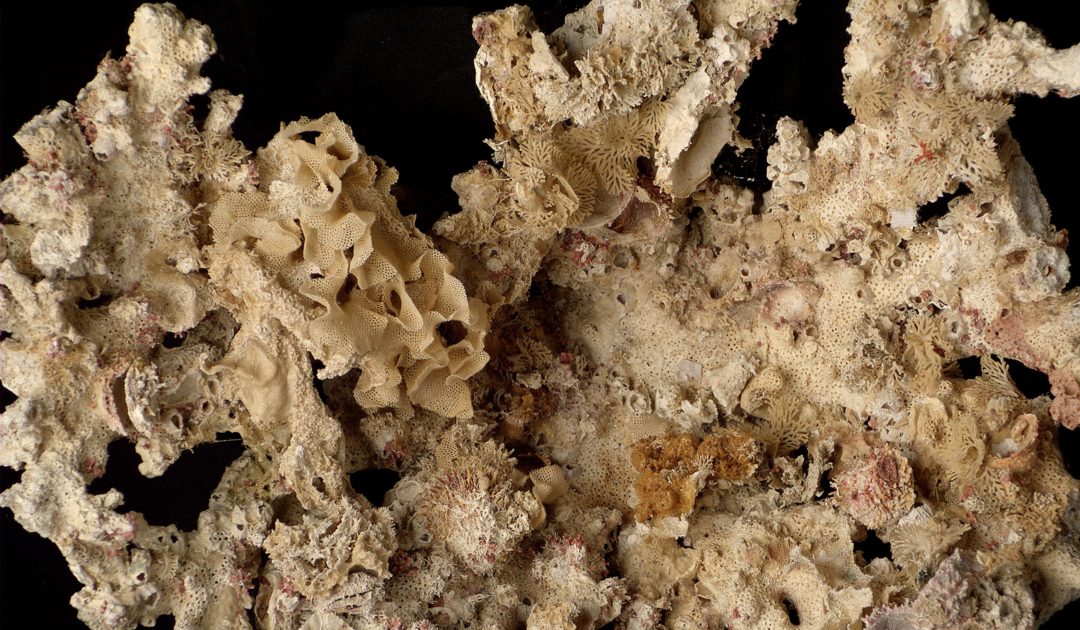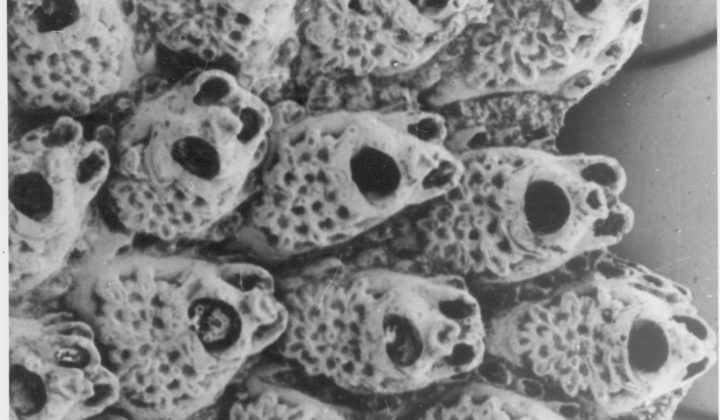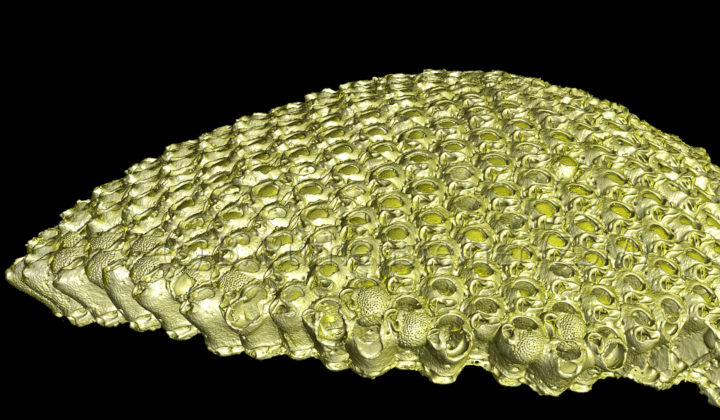The Section´s collection of fossil bryozoans is one of the largest in the world, due to the legacy of Professor Voigt (1905-2004).The lasting international importance is due to a complete documentation of Cretaceous to Paleocene Bryozoa, collected from the Carbonate Boreal Chalk Sea in northern and eastern Europe, covering the stratigraphical record from Cenomanian to Danian and thus the rise and fall of the respective carbonate platform, collapsing during the Paleocene Eocence Thermal Maximum (PETM).
A DFG-project funded project (LIS-Project SCHO 581/12-1 “Enhancing documentation and digitalization of the Bryozoa collection donated by Professor Voigt (1905-2004) to the Senckenberg Research Institute, Frankfurt am Main, Germany”) resulted the digitization of the most important parts of the bryozoan coll. E. Voigt, estimated to contain around 300,000 specimens.
Digitization was performed using the object-oriented collection management system SeSam (http://sesam.senckenberg.de),
The type material was documented by issuing a type catalogue including SEM images and a revision of the material (Martha et al. 2019; see ˅Research).
Project data are available in various portals (keyword „Scho 581/12-1“).
https://search.senckenberg.de/aquila-public-search/search
https://www.gbif.org/dataset/966c9070-f762-11e1-a439-00145eb45e9a
https://bms.gfbio.org/landingpage.php?provider=4&file=http://biocase.senckenberg.de/pywrapper.cgi?dsa=coll_voigt_bryozoa&filter=
In addition to the Voigt legacy of fossil bryozoans, we received valuable collections by Prof. Dr. Gero Hillmer (Hamburg), Gisela Illies (Karslruhe, 1926-2008) (http://bryozoa.net/iba/files/IBA_Bull_4(3).pdf) und by Ursula Schneemilch (Hannover).
Paleozoic bryozoans are well represented by types and materials deposited in the Senckenberg by PD Dr. Andrej Ernst (Hamburg).



